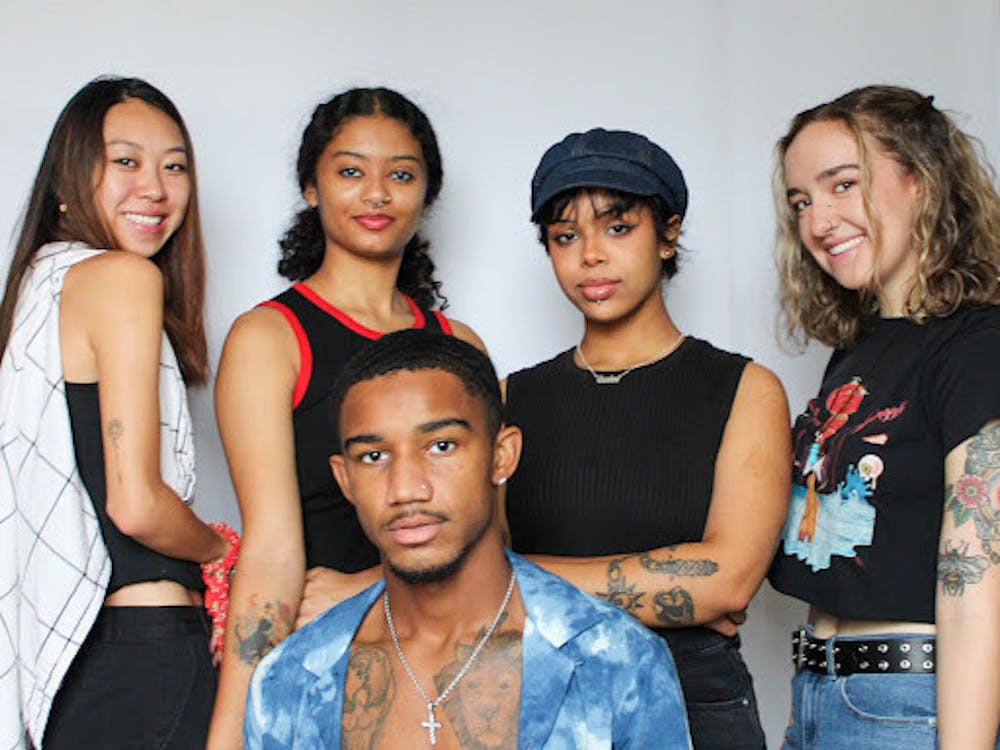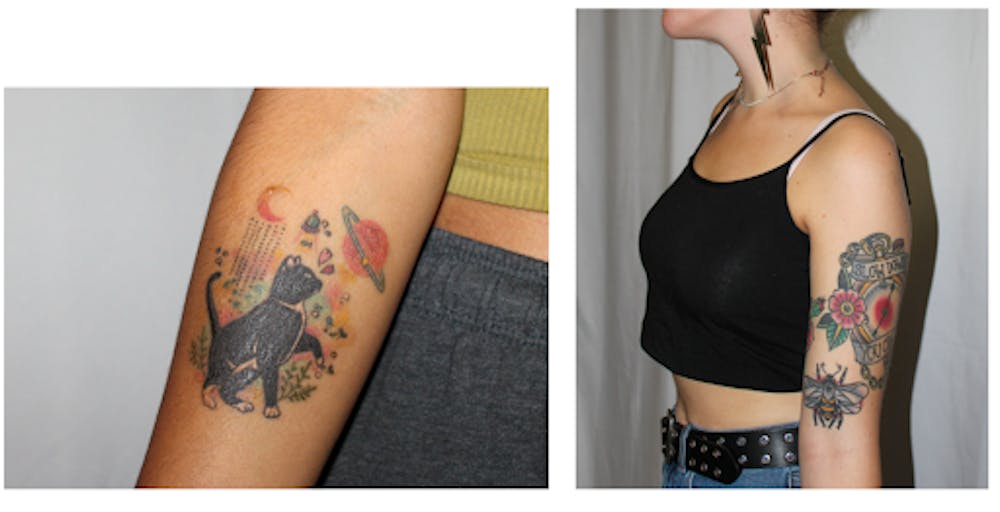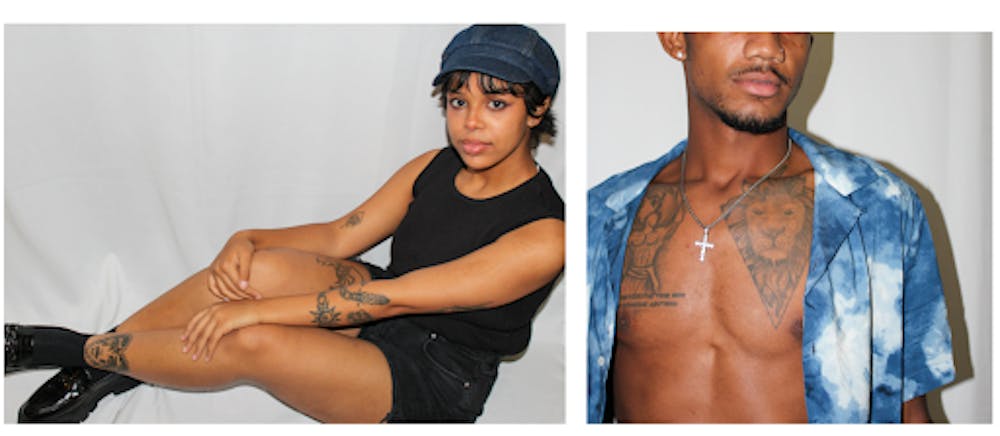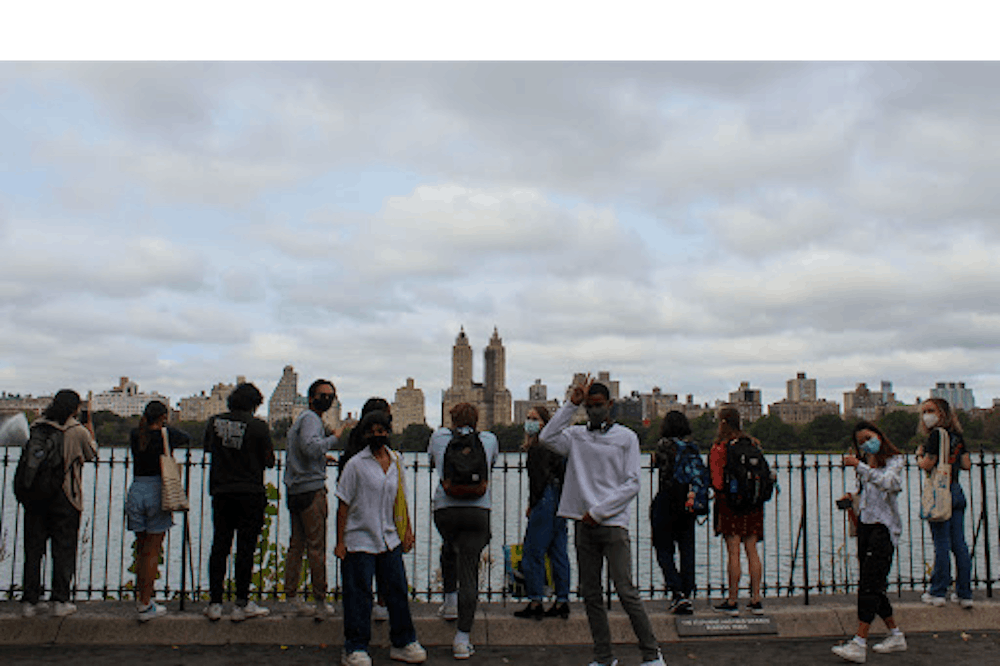Last October, inspired by artist Kip Fulbeck, I wrote an article in which I interviewed five Duke individuals on a search for the intersection between “inking and identity.” After interviewing one professor, three students with tattoos, and one without, I concluded simply that tattoos are outlets of self-expression, ways for people to bare their internal stories to the world.
Twelve months and eight tats later, I’ve found a niche of four other individuals who hold this viewpoint as well, and we stand on an interesting common ground. Coincidentally, all five of us are currently in the Duke in New York program, which gave me some food for thought — and also made it easy to catch these friends right down our 11th floor hallway for some lighthearted conversation about body art.

The first convo actually happened on the sidewalk. Nia Williams ‘23 and I were on our way from the Whitney, trotting through the Meatpacking District. Williams shares about her two tattoos, both inspired by her pet: “The first one on my rib, I got of a paw surrounded by a heart. It was originally supposed to be for my cat, it was supposed to be his paw, but he would not sit still when I tried to get a copy of his paw on ink, and so I decided to just look up a cat paw and put it in a heart.
“I wanted to it to be for my cat because I’ve had him my whole life, and I love veterinary stuff and I want to be one, so, I dunno, I’m kinda going through a crisis right now and I don’t know if I want to be a vet anymore, [though] my whole life I had wanted to…” We both grin — going through a crisis is a pretty relatable event for a career-searching college student.
“He recently passed away,” Williams continued, “so I wanted a tattoo of him, his name is Mr. Kitty, so I got this one — “ she points to the tattoo on her right forearm, of Mr. Kitty, black and white, reaching for the stars, with galaxies in color swirling all about him. The outdoor night scenery, Williams explained, was because “he loved to be outside. He would be under cars, on rooftops… I moved around a lot as a kid, but everybody [in my neighborhoods] knew Mr. Kitty, and loved him.”

Skylar Graham ‘23, who has written two articles about tattoo shops in Durham, has three tattoos on her left arm. One she designed herself, with a clock, bright flowers, and the lyrics slow down you crazy child from Billy Joel’s “Vienna.” The other two — a bee and rose — she chose from a similar artist’s catalogue. Speaking over the punk rock streaming in her room, Graham told me, “I’ve always liked traditional style and the colors, the bold outlines.”
Concerning the physical placement of her tattoos, she explained, “I know a lot of people are concerned about professionalism, and being able to see it and not see it; even my mom has been like, ‘keep it above the elbow,’ or ‘keep it to where you can cover it.’ So where mine is right now is easy to show people, but if I were to need to cover it, I could. But I mean, it’s kinda BS that you would need to cover it these days.”
All three of Graham’s tats are from different cities: Charlotte, Durham, and Wilmington. “Now I want to try to get each one in a different city… it just kinda worked out [this] way, and since I already have gotten each in a different city, I just want to keep that going.”
Jessi Books ‘23 also enjoys getting their body art from different locations. With nine tattoos, on all four limbs, their black tattoos of varying detail also range in design and artistic touch. “I knew I wanted a Hannya mask for my first one, so I found an artist that specialized in Japanese traditional tattoos,” Books explained “My other ones since then are flash tattoos; so either the artist was having an event, or they had a flat sheet of tattoos for you to pick from, and they were cheaper usually, too, which is why I can afford to have so many.”
Books leans back in their chair, reflecting. “Sometimes they have events… I like going to female and nonbinary artists the most just to support them. These flash events also do a sliding scale, so you can pay anything between 70 and 130. They also encourage discounts for BIPOC, and I don’t think a lot of artists do stuff like that.”
When sharing their stance on tattoos being taboo in the professional world, Books said, “If you’re going into finance, med school, or law, people are historically more conservative in those fields, compared to other[s]. In the arts, people express themselves more… in fashion it might be a little different than film, because fashion still is very, like, hoity toity, at least the fashion I want to do.”

Justin Wilson gap ‘23 also considered his tattoos through an artistic field’s lens — the modeling industry. “People have definitely pointed it out… not my agency, or photographers, but some of my family members have definitely been like, ‘oh, you should chill with the tats.’ I can see their perspective, but I kinda relate that to my nose ring. [People may] be like, ‘oh, you can’t go corporate,’ but I’m at the point where, if me being tattooed… and this stuff that’s a part of my identity and means a lot to me, is making me not able to get a job, then I’d never really would’ve wanted to work there anyway.”
Wilson has a lion on his left pec and the Greek god Atlas on his right. Swinging his legs off the edge of his bed, he explains, “I got the [lion] because I really wanted [a tattoo in high school], and I still love it to this day. I picked this because I really liked how the lion is coming out of the triangle… like it’s coming out of my chest, my heart.”
“That one definitely has a more interesting story,” Wilson says, placing a palm on his right chest. “It’s Atlas holding the globe on his back, and under, it says ‘if you can overcome your mind you can overcome anything.’ I find that one interesting because I don’t think I even realized how much the tattoo would mean to me when I got it; of course I was already like ‘this resonates with me,’ that’s why I got it, but as time went on, it just meant even more to me especially as I was having some mental health issues, and feeling to the point where ‘I’m the only one in my way,’ just [realizing], if I can overcome what’s going on in my head, then I feel like I can lift up the world.” He bursts out laughing. “I don’t know if I had a premonition when I got [this tattoo], like, ‘oh, everything ‘bout to go downhill.’ But yeah, it really does mean a lot to me.”
For no immediately obvious reason, an entire third of Duke in New York students this year (5/15) have visible tattoos. This clearly contrasts the regular amount you’d find back on campus: maybe one or two classmates, in one or two of your classes. You can’t deny there’s a “New York factor” here at play: who are the students most likely to be drawn to, apply to, and partake in this program? As Graham said: “there’s a lot of artists and creative minded people in New York City.”
Looking around myself, I feel inspired. We have a tight knit cohort this year, smaller than usual due to COVID, but also more diverse than ever. From a DiNY ‘19 alum, I learned only two students in their cohort (of 20+) were BIPOC. In contrast, over two thirds of us in the fall ‘21 cohort are BIPOC, which I personally herald as a great achievement on the program’s part.
This autumn, I’ve found not only the intersection of inking and identity, but also an environment where both body art and personal identities can be freely manifested. Without the constraints of what a tattoo is supposed to mean or say about a person, they become not only an outward expression of our inward mind and heart, but a link between each individual human, reaching out to connect with another.
Thank you, to all of “New Yawk.” May you continue to create, and inspire.

Jocelyn Chin is a Trinity sophomore. Her column runs on alternate Wednesdays.
Get The Chronicle straight to your inbox
Signup for our weekly newsletter. Cancel at any time.
Jocelyn Chin is a Trinity senior and was an opinion managing editor of The Chronicle's 118th volume.

